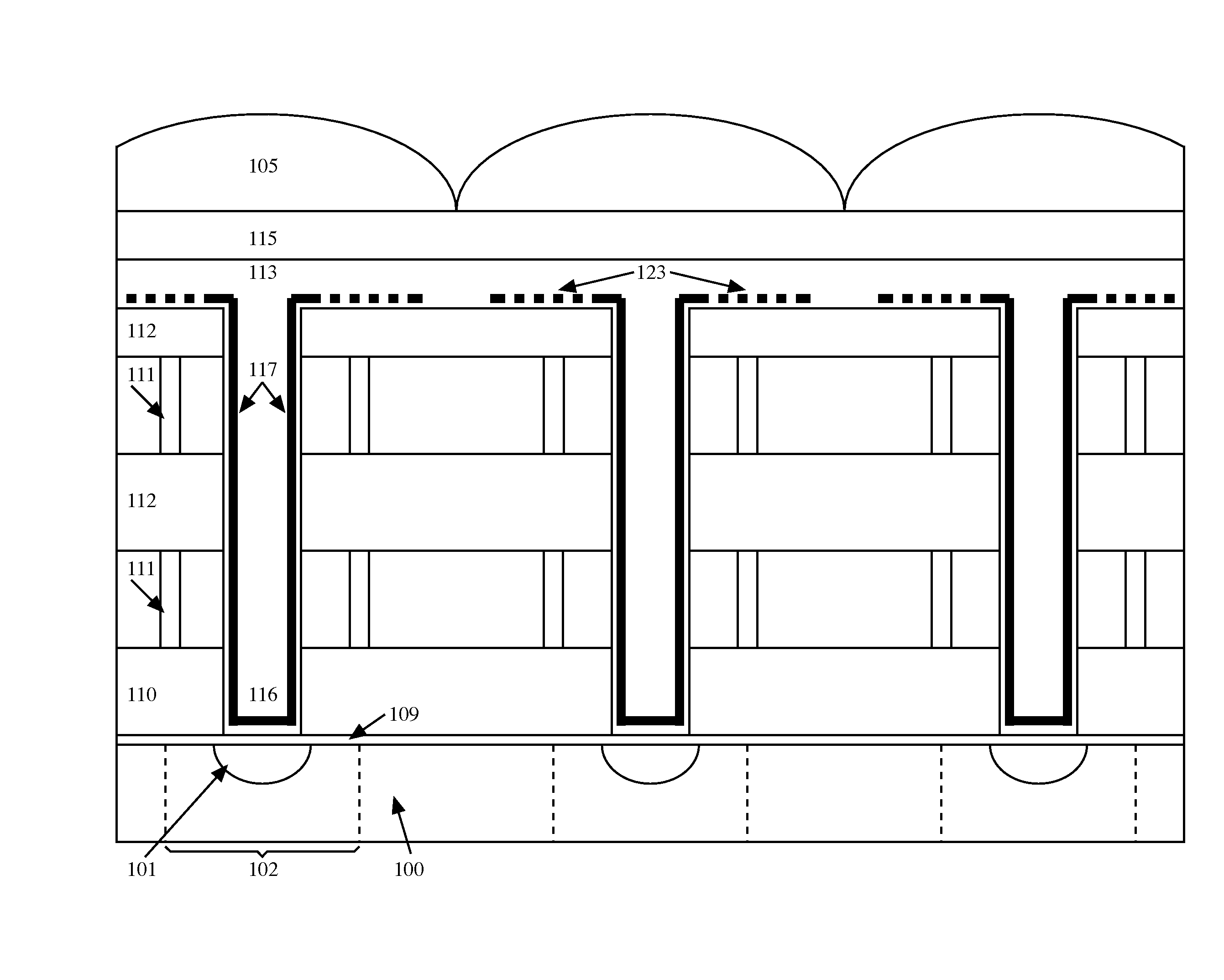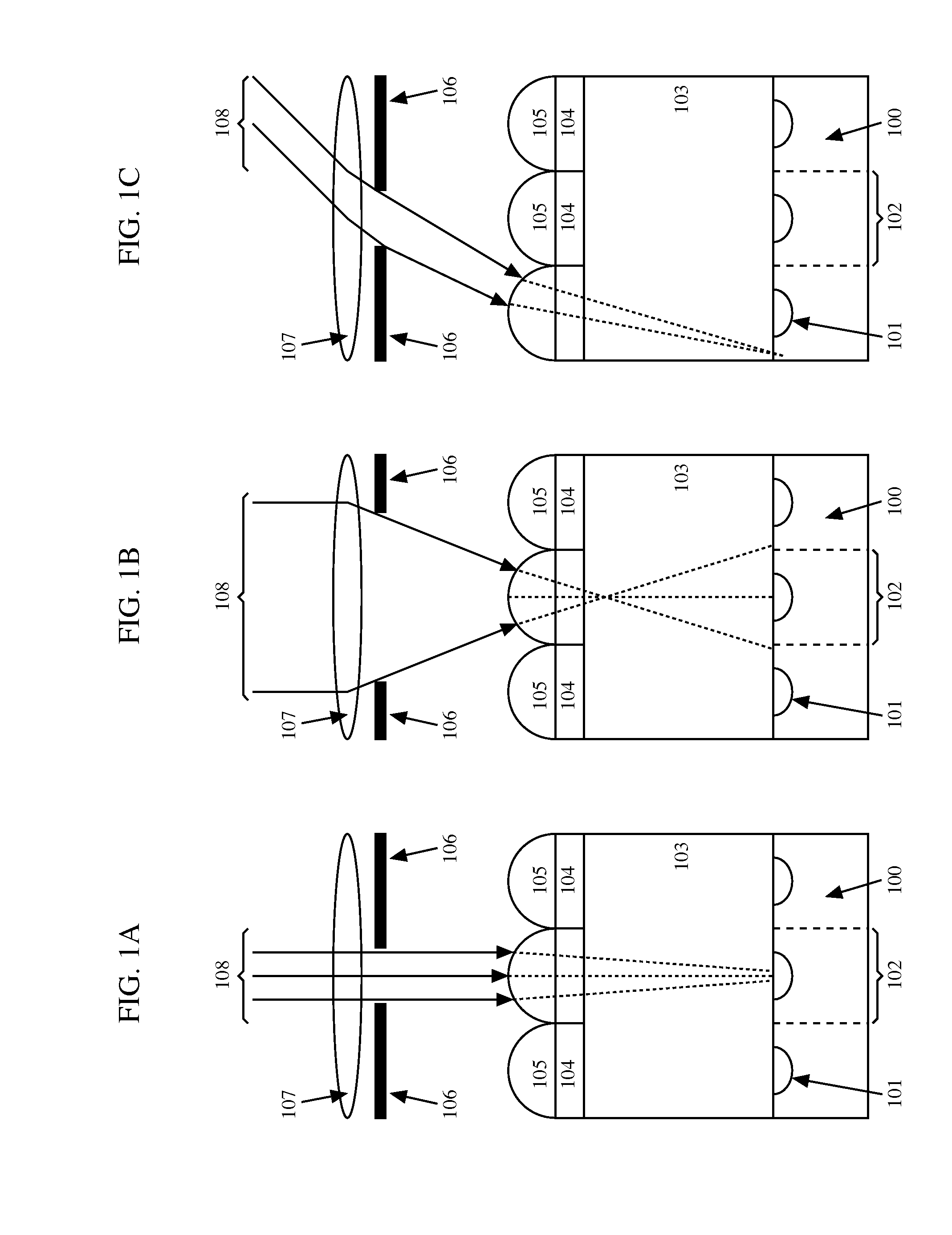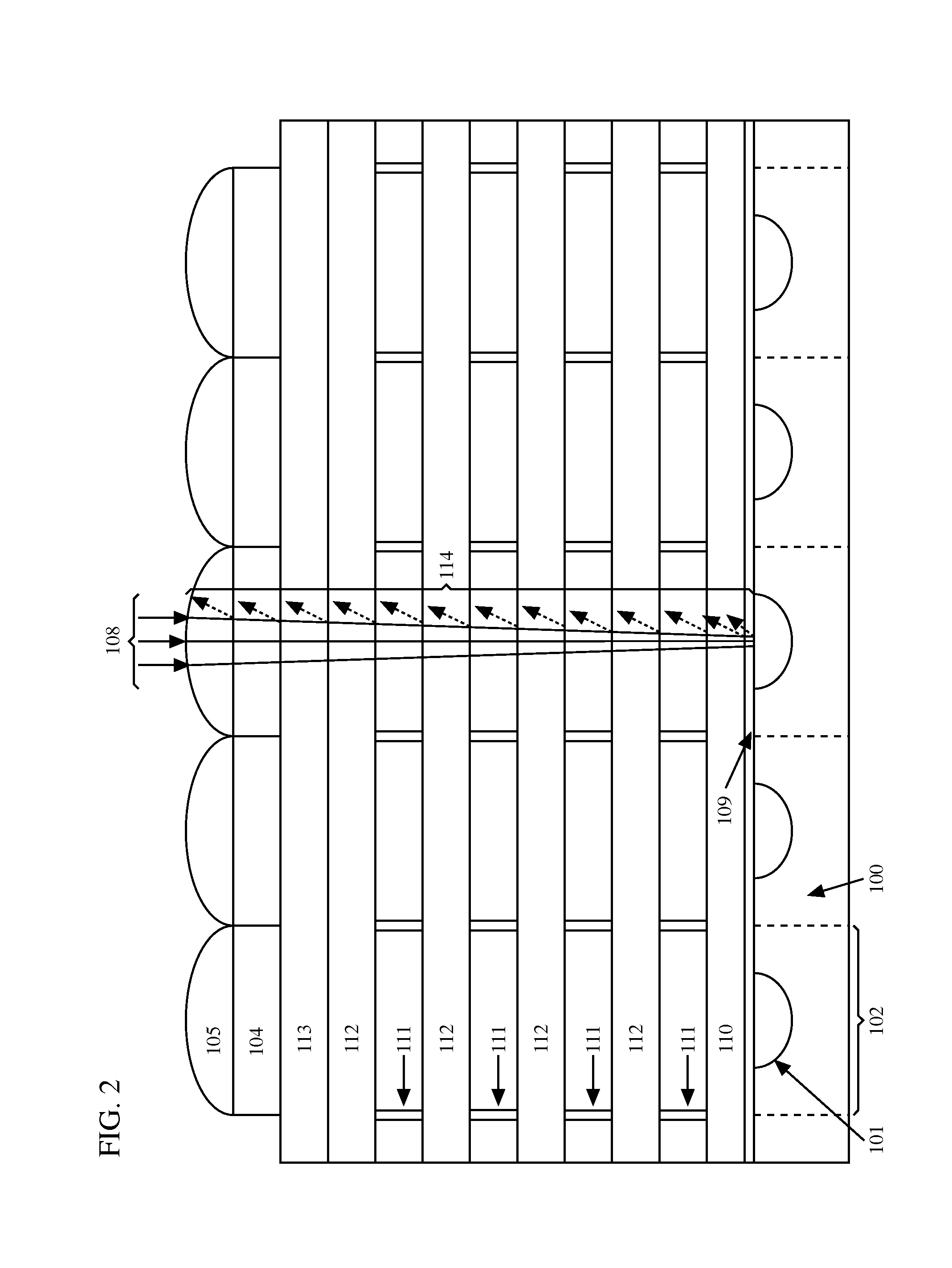Photonic Via Waveguide for Pixel Arrays
a waveguide and pixel array technology, applied in the field of photonic via waveguide for pixel arrays, can solve the problems of increasing the distance between the metal levels, increasing the number, and not being able to use all the metal levels available for the version of the process used to fabricate purely digital cmos integrated circuits
- Summary
- Abstract
- Description
- Claims
- Application Information
AI Technical Summary
Benefits of technology
Problems solved by technology
Method used
Image
Examples
Embodiment Construction
Regions in the Drawing Figures
[0056]100—Substrate.[0057]101—Photo-diode.[0058]102—Pixel.[0059]103—Metallization stack.[0060]104—Color filters.[0061]105—Microlenses.[0062]106—Iris.[0063]107—Lens.[0064]108—Light rays.[0065]109—Dielectric barrier film (for example silicon nitride).[0066]110—Pre-metal dielectric (typically silicon oxide).[0067]111—Metal lines.[0068]112—Inter-metal dielectric.[0069]113—Passivation layer.[0070]114—Reflected light rays.[0071]115—Layer with Graded Index of Refraction (graded in the vertical direction-direction of deposition).[0072]116—High Index of Refraction material, for example silicon nitride or diamond.[0073]117—Metal.[0074]118—First width of Light-Tunnels.[0075]119—Second width of Light-Tunnels.[0076]120—Third width of Light-Tunnel[0077]121—Representation of a Surface Plasmon-Polariton at the surface of a metal layer.[0078]122—Inverted truncated cone or pyramid geometry with radially graded index of refraction (forming a GRIN lens).[0079]123—Perforate...
PUM
 Login to View More
Login to View More Abstract
Description
Claims
Application Information
 Login to View More
Login to View More - R&D
- Intellectual Property
- Life Sciences
- Materials
- Tech Scout
- Unparalleled Data Quality
- Higher Quality Content
- 60% Fewer Hallucinations
Browse by: Latest US Patents, China's latest patents, Technical Efficacy Thesaurus, Application Domain, Technology Topic, Popular Technical Reports.
© 2025 PatSnap. All rights reserved.Legal|Privacy policy|Modern Slavery Act Transparency Statement|Sitemap|About US| Contact US: help@patsnap.com



